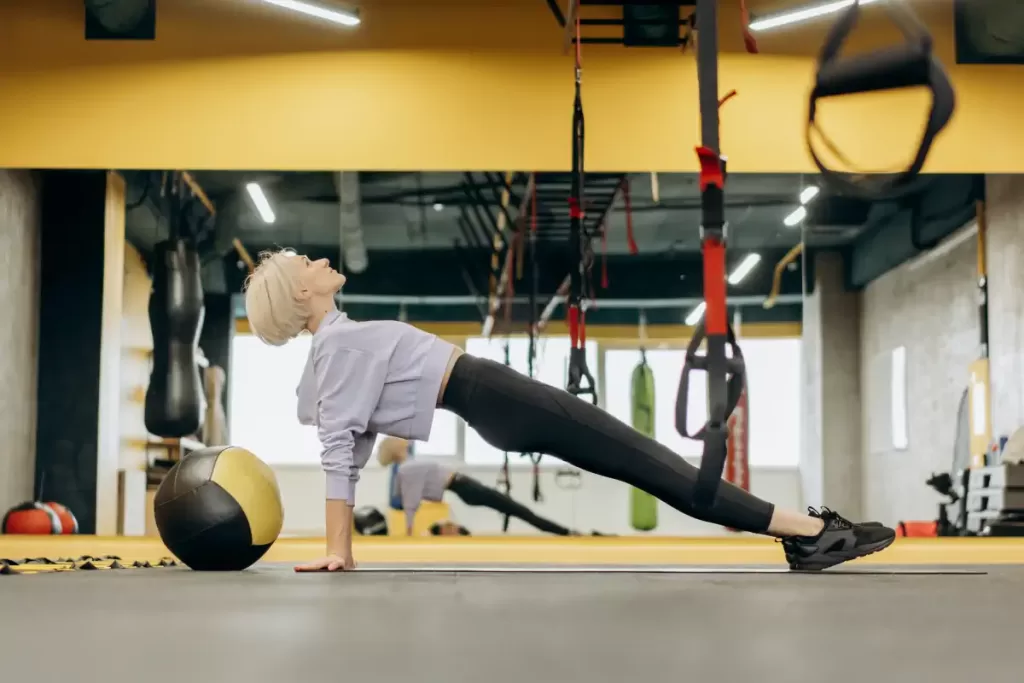Pilates is one of the hottest exercise trends of 2021. Not only is it popular in the US, but it’s also a certified hit in Europe as recent data predicts that the Pilates studios market in the continent will generate almost $50 billion by 2027. The majority of individuals have heard of Pilates, but are uncertain what it entails. In a nutshell, Pilates is a set of exercises performed with specialized equipment to develop flexibility, physical strength, and posture, as well as mental awareness.
Similar to cycling, the exercises need a great deal of precision and control, with a significant emphasis on technique. Some athletes and dancers have added Pilates to their fitness routines as it helps to enhance their performance, and cyclists may do well to incorporate this type of workout into their exercise routine. If you’re a cyclist who wants to shake up your fitness routine, consider Pilates and see how it can boost your performance.
Pilates strengthens core muscles
Cyclists can benefit from having a good workout routine to keep their bodies in shape and their muscles in peak condition. Having a post-exercise routine is also essential for overall health and wellness, so after a gym workout or a Pilates session, make sure to cool down, have a shower, and have a post-workout haircare routine to keep your hair healthy. Doing so will not only make you feel good, but it will help you look your best and boost your self-confidence, whether you’re on a bike or in the gym.
Pilates focuses on the core muscles, especially the abs, buttocks, and hips. Cycling becomes a lot easier and more efficient when your core is strong. Pilates improves your balance on a bike by strengthening the core, or stability muscles, which keeps the spine in a solid position while your limbs move. This is helpful for competitive cyclists in terms of functionality enhancement, as well as for novice cyclists biking to work or the store, as it makes cycling better and safer. You’ll be able to create greater power through your legs if they have a strong and secure foundation. As a result, you’ll be able to ride your bike quicker and more efficiently.

Increases bone mineral density
Cyclists have lower bone density than athletes from other sports, which means that their bones are weaker and more prone to fractures. By including some resistance training into your routine such as Pilates, you can increase bone mineral density, boost resilience, and lower the chance of fractures should you get into a collision. Another benefit of resistance training is that it improves muscle strength without adding mass, which allows you to enhance your power-to-weight ratio.
Improves flexibility
Flexibility is all about getting the joints back to their normal range of motion. Hunching forward over the frame causes tight upper back, neck, and hip flexors in cyclists, which is especially problematic for racing cyclists. Pilates will assist to stretch these muscles while also strengthening them to prevent them from becoming tight and short, which is another effective way to minimize injury. Increased flexibility allows you to get into the most aerodynamic posture possible on the bike, which improves performance and comfort while also aiding muscle recovery and reducing the risk of injuries, joint tension, and discomfort.
Helps improve limb alignment
Pilates improves limb alignment, which will boost your performance in addition to core stability. When your legs are properly aligned from the hip joint down, you will be able to better utilize the strength in your muscles, making cycling easier. On the bike, this uniform distribution of muscular strength reduces the danger of injury. Pilates is about moving with ease, which includes optimizing your limb alignment for maximum body and muscle function.
Pilates can help cyclists develop balance, flexibility, and strength, among other things. You’ll gain a better understanding of your body and how it moves, as well as a reduction in body stiffness, instability, and poor coordination. This makes Pilates a fantastic way to train your body without pushing it to its limits. To improve your performance, consider attending a Pilates class today, and see what a difference it makes in your cycling.
- For Cyclists, Rest Days Are Essential To Avoiding Long-Term Injury - June 27, 2023
- Why Cyclists Need Complex Carbohydrates For Enhanced Endurance - February 12, 2022
- 5 Essential Vitamins And Minerals That Cyclists Need - September 5, 2021

